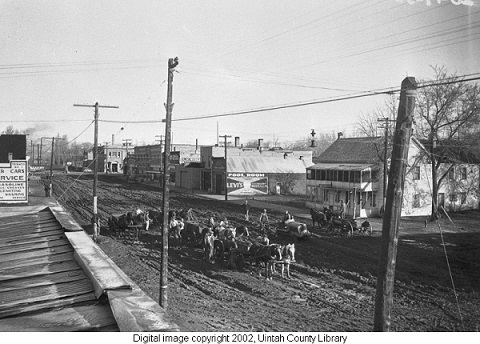Dublin Core
Title
Description
Meet Barney Flanagan and learn how it fell to him to keep corruption out of government-funded work-relief jobs in Utah during the early years of the Great Depression.
When you hear about shortages during the Great Depression, you probably imagine breadlines and food rationing. But paid working hours were also in short supply. And it fell to men like labor inspector Barney Flanagan to ensure fair access to work hours among the growing number of unemployed Utahns.
The Depression hit Utah harder than many other states. In 1933, unemployment was the fourth highest in the nation at over 35 percent. The State lobbied Congress to secure $4.1 million in aid for highway construction – and the jobs that went with it. To ensure that work hours were spread around equally, regulations tied to the funding capped workweeks at 30 hours and required that road contractors hire only from approved lists. To prevent the contractors from giving those hours to family and friends, the Utah State Highway Commission’s hiring committee also determined that once a man reached his 30-hour limit, he was replaced by the next person on the list. At forty-eight cents per hour, work with the Highway Commission was good. A man could earn nearly $15 before giving way to someone else.
Barney Flanagan worked as the Highway Commission’s labor inspector – his job was to enforce these rules. Every night, with help from his wife, Flanagan reviewed the road crew rosters, counted up hours, and prepared for the following morning when he would lay off the men who had hit their 30-hour limit. Flanagan initially questioned the regulations, but eventually realized that, “There were not nearly enough road jobs to keep the unemployed busy... [but] The dinky thirty hours a man got gave him a big lift psychologically [because] he knew he had not been forgotten.”
In an environment rife with potential for bribery, Flanagan worked hard to remain fair. He took pride in the fact that he “had no difficulty in walking right through groups of … 700 workers gathered around [the work site]. No one was after my scalp” he said. “The men had learned that there were no favorites. That's all they asked.”
Creator
Samantha Pannier for Utah Humanities © 2017
Source
Image: Team and Scraper doing Road Work, 1933. Utah was hit hard during the Great Depression, and work in rural areas was hard to come by. Road construction in 100 and 200 blocks of South Vernal Avenue. Courtesy of Uintah County Library.
_______________
See Barney L. Flanagan, “A Labor Inspector during the Great Depression,” Utah Historical Quarterly, volume 54, number 3, 1986, pp 240-244; R. Thomas Quinn, “Out of the Depression’s Depths: Henry H. Blood’s First Year as Governor,” Utah Historical Quarterly, volume 54, number 3, 1986, pp 216-239; John S. McCormick, “The Great Depression,” Utah History Encyclopedia, accessed at http://historytogo.utah.gov/utah_chapters/from_war_to_war/thegreatdepression.html

